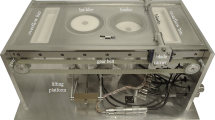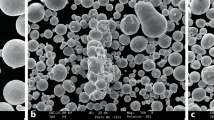Abstract
Laser-Powder Bed Fusion (LPBF) has been extensively utilized by a broad range of manufacturing industries in recent years. Fabricating parts with high mechanical properties and smooth surfaces has motivated such industries and academic communities to study different aspects and steps of the LPBF process, including powder spreading, laser scanning, and solidification. Creation of highly dense powder layers with lower surface roughness before laser scanning step is a must for producing non-porose part layers after laser scanning step of LPBF process. Thus, the initial powder spreading step of the LPBF process has been investigated to correlate the powder spreadability to powder layer quality and consequent part properties. The current review paper summarizes the previous work performed to define some spreadability metrics and determine the impact of LPBF process parameters and powder characteristics on powder spreadability. The spread powder layer's quality, which is called powder spreadability, is discussed in terms of empty areas on the substrate, powder bed density, powder surface roughness, powder dynamic repose angle, and powder mass flow rate. Also, the influence of LPBF process parameters, including recoating velocity, layer thickness, and recoater type, and powder characteristics, like particle size distribution, on the defined spreadability metrics are reviewed.





















Similar content being viewed by others
References
Behdani, B., Senter, M., Mason, L., Leu, M., Park, J.: Numerical study on the temperature-dependent viscosity effect on the strand shape in extrusion-based additive manufacturing. J. Manuf. Mater. Process. 4, 46 (2020). https://doi.org/10.3390/jmmp4020046
Hung, C.H., Chen, W.T., Sehhat, M.H., Leu, M.C.: The effect of laser welding modes on mechanical properties and microstructure of 304L stainless steel parts fabricated by laser-foil-printing additive manufacturing. Int. J. Adv. Manuf. Technol. (2020). https://doi.org/10.1007/s00170-020-06402-7
Mahdianikhotbesara, A., Sehhat, M.H., Hadad, M.: Experimental study on micro-friction stir welding of dissimilar butt joints between Al 1050 and pure copper. Metallogr. Microstruct. Anal. (2021). https://doi.org/10.1007/s13632-021-00771-5
Bhuvanesh Kumar, M., Sathiya, P.: Methods and materials for additive manufacturing: a critical review on advancements and challenges. Thin-Walled Struct. 159, 107228 (2021). https://doi.org/10.1016/j.tws.2020.107228
Tan, J.H., Wong, W.L.E., Dalgarno, K.W.: An overview of powder granulometry on feedstock and part performance in the selective laser melting process. Addit. Manuf. 18, 228–255 (2017). https://doi.org/10.1016/j.addma.2017.10.011
Kergaßner, A., Koepf, J.A., Markl, M., Körner, C., Mergheim, J., Steinmann, P.: A novel approach to predict the process-induced mechanical behavior of additively manufactured materials. J. Mater. Eng. Perform. (2021). https://doi.org/10.1007/S11665-021-05725-0
He, Y., Hassanpour, A., Bayly, A.E.: Linking particle properties to layer characteristics: discrete element modelling of cohesive fine powder spreading in additive manufacturing. Addit. Manuf. 36, 101685 (2020). https://doi.org/10.1016/j.addma.2020.101685
Liang, X., Dong, W., Chen, Q., To, A.C.: On incorporating scanning strategy effects into the modified inherent strain modeling framework for laser powder bed fusion. Addit. Manuf. 37, 101648 (2021). https://doi.org/10.1016/J.ADDMA.2020.101648
Rausch, A.M., Pistor, J., Breuning, C., Markl, M., Körner, C.: New grain formation mechanisms during powder bed fusion. Materials 14, 3324 (2021). https://doi.org/10.3390/MA14123324
Cobbinah, P.V., Nzeukou, R.A., Onawale, O.T., Matizamhuka, W.R.: Laser powder bed fusion of potential superalloys: a review. Metals (Basel) 11, 1–37 (2021). https://doi.org/10.3390/met11010058
Reith, M., Franke, M., Schloffer, M., Körner, C.: Processing 4th generation titanium aluminides via electron beam based additive manufacturing—characterization of microstructure and mechanical properties. Materialia. 14, 100902 (2020). https://doi.org/10.1016/J.MTLA.2020.100902
Haeri, S., Haeri, S., Hanson, J., Lotfian, S.: Analysis of Radiation Pressure and Aerodynamic Forces Acting on Powder Grains in Powder-Based Additive Manufacturing, n.d
Haeri, S., Benedetti, L., Ghita, O.: Effects of particle elongation on the binary coalescence dynamics of powder grains for Laser Sintering applications, (n.d.)
King, W.E., Barth, H.D., Castillo, V.M., Gallegos, G.F., Gibbs, J.W., Hahn, D.E., Kamath, C., Rubenchik, A.M.: Observation of keyhole-mode laser melting in laser powder-bed fusion additive manufacturing. J. Mater. Process. Technol. 214, 2915–2925 (2014). https://doi.org/10.1016/j.jmatprotec.2014.06.005
Khairallah, S.A., Anderson, A.T., Rubenchik, A., King, W.E.: Laser powder-bed fusion additive manufacturing: physics of complex melt flow and formation mechanisms of pores, spatter, and denudation zones. Acta Mater. 108, 36–45 (2016). https://doi.org/10.1016/j.actamat.2016.02.014
Spierings, A.B., Herres, N., Levy, G.: Influence of the particle size distribution on surface quality and mechanical properties in AM steel parts. Rapid Prototyp. J. 17, 195–202 (2011). https://doi.org/10.1108/13552541111124770
Gibson, I., Shi, D.: Material properties and fabrication parameters in selective laser sintering process. Rapid Prototyp. J. 3, 129–136 (1997). https://doi.org/10.1108/13552549710191836
Breuning, C., Arnold, C., Markl, M., Körner, C.: A multivariate meltpool stability criterion for fabrication of complex geometries in electron beam powder bed fusion. Addit. Manuf. 45, 102051 (2021). https://doi.org/10.1016/J.ADDMA.2021.102051
Moghadasi, M., Du, W., Li, M., Pei, Z., Ma, C.: Ceramic binder jetting additive manufacturing: effects of particle size on feedstock powder and final part properties. Ceram. Int. 46, 16966–16972 (2020). https://doi.org/10.1016/j.ceramint.2020.03.280
Snow, Z., Martukanitz, R., Joshi, S.: On the development of powder spreadability metrics and feedstock requirements for powder bed fusion additive manufacturing. Addit. Manuf. 28, 78–86 (2019). https://doi.org/10.1016/j.addma.2019.04.017
Chen, H., Wei, Q., Wen, S., Li, Z., Shi, Y.: Flow behavior of powder particles in layering process of selective laser melting: numerical modeling and experimental verification based on discrete element method. Int. J. Mach. Tools Manuf. 123, 146–159 (2017). https://doi.org/10.1016/j.ijmachtools.2017.08.004
Macho, O., Demková, K., Gabrišová, Ľ, Čierny, M., Mužíková, J., Galbavá, P., Nižnanská, Ž, Blaško, J., Peciar, P., Fekete, R., Peciar, M.: Analysis of static angle of repose with respect to powder material properties. Acta Polytech. 60, 73–80 (2020). https://doi.org/10.14311/AP.2020.60.0073
Spierings, A.B., Voegtlin, M., Bauer, T., Wegener, K.: Powder flowability characterisation methodology for powder-bed-based metal additive manufacturing. Prog. Addit. Manuf. 1, 9–20 (2016). https://doi.org/10.1007/s40964-015-0001-4
Zhang, J., Tan, Y., Bao, T., Xu, Y., Xiao, X., Jiang, S.: Discrete element simulation of the effect of roller-spreading parameters on powder-bed density in additive manufacturing. Mater. (Basel) (2020). https://doi.org/10.3390/ma13102285
Cao, L.: Study on the numerical simulation of laying powder for the selective laser melting process. Int. J. Adv. Manuf. Technol. 105, 2253–2269 (2019). https://doi.org/10.1007/s00170-019-04440-4
Ahmed, M., Pasha, M., Nan, W., Ghadiri, M.: A simple method for assessing powder spreadability for additive manufacturing. Powder Technol. 367, 671–679 (2020). https://doi.org/10.1016/j.powtec.2020.04.033
Cordova, L., Bor, T., de Smit, M., Campos, M., Tinga, T.: Measuring the spreadability of pre-treated and moisturized powders for laser powder bed fusion. Addit. Manuf. (2020). https://doi.org/10.1016/j.addma.2020.101082
Haeri, S., Wang, Y., Ghita, O., Sun, J.: Discrete element simulation and experimental study of powder spreading process in additive manufacturing. Powder Technol. 306, 45–54 (2017). https://doi.org/10.1016/j.powtec.2016.11.002
Fouda, Y.M., Bayly, A.E.: A DEM study of powder spreading in additive layer manufacturing. Granul. Matter. (2020). https://doi.org/10.1007/s10035-019-0971-x
Parteli, E.J.R., Pöschel, T.: Particle-based simulation of powder application in additive manufacturing. Powder Technol. 288, 96–102 (2015). https://doi.org/10.1016/j.powtec.2015.10.035
Desai, P.S., Fred Higgs, C.: Spreading process maps for powder-bed additive manufacturing derived from physics model-based machine learning. Metals (Basel) (2019). https://doi.org/10.3390/met9111176
Chen, H., Wei, Q., Zhang, Y., Chen, F., Shi, Y., Yan, W.: Powder-spreading mechanisms in powder-bed-based additive manufacturing: experiments and computational modeling. Acta Mater. 179, 158–171 (2019). https://doi.org/10.1016/j.actamat.2019.08.030
Escano, L.I., Parab, N.D., Xiong, L., Guo, Q., Zhao, C., Fezzaa, K., Everhart, W., Sun, T., Chen, L.: Revealing particle-scale powder spreading dynamics in powder-bed-based additive manufacturing process by high-speed x-ray imaging. Sci. Rep. 8, 1–11 (2018). https://doi.org/10.1038/s41598-018-33376-0
Schmidt, J., Parteli, E.J.R., Uhlmann, N., Wörlein, N., Wirth, K.E., Pöschel, T., Peukert, W.: Packings of micron-sized spherical particles—Insights from bulk density determination, X-ray microtomography and discrete element simulations. Adv. Powder Technol. 31, 2293–2304 (2020). https://doi.org/10.1016/j.apt.2020.03.018
Parteli, E.J.R., Schmidt, J., Blümel, C., Wirth, K.E., Peukert, W., Pöschel, T.: Attractive particle interaction forces and packing density of fine glass powders. Sci. Rep. 4, 1–7 (2014). https://doi.org/10.1038/srep06227
Baule, A., Mari, R., Bo, L., Portal, L., Makse, H.A.: ARTICLE Mean-field theory of random close packings of axisymmetric particles. Nat. Commun. (2013). https://doi.org/10.1038/ncomms3194
Strondl, A., Lyckfeldt, O., Brodin, H., Ackelid, U.: Characterization and control of powder properties for additive manufacturing. JOM 67, 549–554 (2015). https://doi.org/10.1007/s11837-015-1304-0
Arévalo, R., Maza, D., Pugnaloni, L.A.: Identification of arches in two-dimensional granular packings. Phys. Rev. E (2006). https://doi.org/10.1103/PhysRevE.74.021303
Verbücheln, F., Parteli, E.J.R., Pöschel, T.: Helical inner-wall texture prevents jamming in granular pipe flows. Soft Matter 11, 4295–4305 (2015). https://doi.org/10.1039/c5sm00760g
Shaheen, M.Y., Thornton, A.R., Luding, S., Weinhart, T.: The influence of material and process parameters on powder spreading in additive manufacturing. Powder Technol. 383, 564–583 (2021). https://doi.org/10.1016/j.powtec.2021.01.058
Le, T.P., Wang, X., Davidson, K.P., Fronda, J.E., Seita, M.: Experimental analysis of powder layer quality as a function of feedstock and recoating strategies. Addit. Manuf. 39, 101890 (2021). https://doi.org/10.1016/J.ADDMA.2021.101890
Wang, L., Yu, A., Li, E., Shen, H., Zhou, Z.: Effects of spreader geometry on powder spreading process in powder bed additive manufacturing. Powder Technol. (2021). https://doi.org/10.1016/j.powtec.2021.02.022
Haeri, S.: Optimisation of blade type spreaders for powder bed preparation in additive manufacturing using DEM simulations. Powder Technol. 321, 94–104 (2017). https://doi.org/10.1016/j.powtec.2017.08.011
Yao, D., An, X., Fu, H., Zhang, H., Yang, X., Zou, Q., Dong, K.: Dynamic investigation on the powder spreading during selective laser melting additive manufacturing. Addit. Manuf. 37, 101707 (2021). https://doi.org/10.1016/j.addma.2020.101707
Author information
Authors and Affiliations
Corresponding author
Ethics declarations
Conflict of interest
The authors declare that they have no conflict of interest.
Additional information
Publisher's Note
Springer Nature remains neutral with regard to jurisdictional claims in published maps and institutional affiliations.
Rights and permissions
About this article
Cite this article
Sehhat, M.H., Mahdianikhotbesara, A. Powder spreading in laser-powder bed fusion process. Granular Matter 23, 89 (2021). https://doi.org/10.1007/s10035-021-01162-x
Received:
Accepted:
Published:
DOI: https://doi.org/10.1007/s10035-021-01162-x




